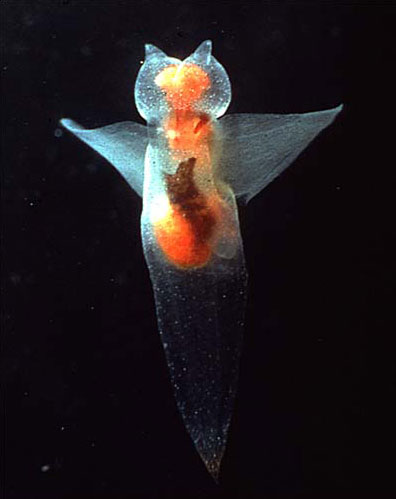
The Clione limacina is approximately an inch long. The wings beat at the same time to make the Clione swim.
Read more about: The Angelic Creature With Devilish Charm
Bibliographic details:
- Article: Clione limacina
- Author(s): Dr. Biology
- Publisher: Arizona State University School of Life Sciences Ask A Biologist
- Site name: ASU - Ask A Biologist
- Date published:
- Date accessed:
- Link: https://askabiologist.asu.edu/clione-limacina
APA Style
Dr. Biology. (). Clione limacina. ASU - Ask A Biologist. Retrieved from https://askabiologist.asu.edu/clione-limacina
Chicago Manual of Style
Dr. Biology. "Clione limacina". ASU - Ask A Biologist. . https://askabiologist.asu.edu/clione-limacina
Dr. Biology. "Clione limacina". ASU - Ask A Biologist. . ASU - Ask A Biologist, Web. https://askabiologist.asu.edu/clione-limacina
MLA 2017 Style

Professor Saterlie studies this angelic creature to figure out the inner workings of the nervous system.
Be Part of
Ask A Biologist
By volunteering, or simply sending us feedback on the site. Scientists, teachers, writers, illustrators, and translators are all important to the program. If you are interested in helping with the website we have a Volunteers page to get the process started.

